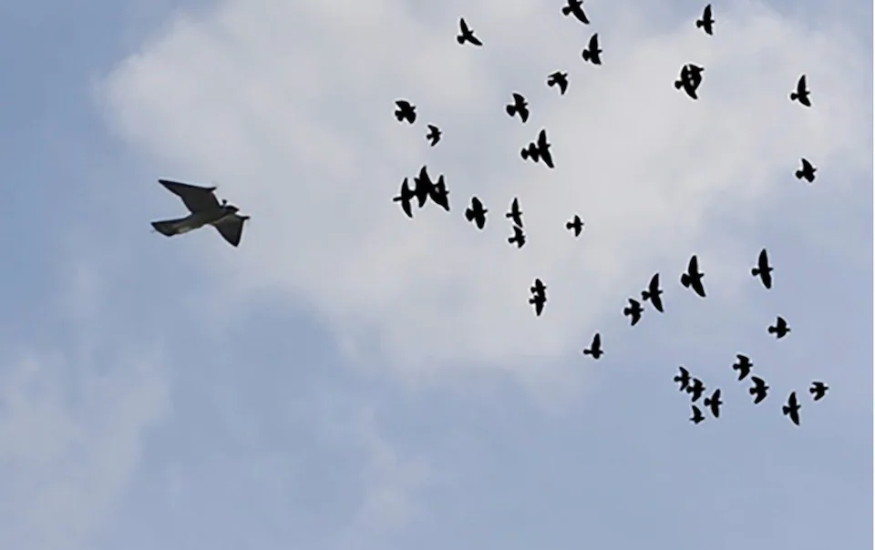The latest flying invention may sound to be Superman, but it's a bird and a plane combined. The University of Groningen in the Netherlands created RobotFalcon to drive away flocks that stay close to airports, endangering planes. The realistic Robo-raptor was developed to imitate and emulate the motions of a peregrine falcon, the world's fastest predator that hunts numerous types of birds.
The fiberglass bird, equipped with a propeller on each wing and steering controls on the tail, weighs about half a pound and can reach speeds of more than 30mph. A camera on the helmet enables driving through remote control. In fresh testing conducted in agricultural settings, RobotFalcon completely cleaned away birds from flocks in under five minutes, per EuroNews.
Drones removed just 80% of the birds in similar testing during the same time. Engineers said the strategy was less expensive and more morally correct than utilizing genuine birds of prey, which may be difficult to control.

Taking Advantage of Falcon's Predatory Role
Dr. Rolf Storms stated in the Royal Society Interface Journal that breeding research training falcons are highly expensive, and the efficiency of falconry is restricted since falcons cannot be flown often, and guiding their assaults is difficult.
Rather than just actual falcons, models that replicate aesthetically and behaviorally may be a potential technique to repel birds, preserving the benefits of a live predator but with less practical limits. It can be accurately guided to strike a flock while also being flown more often than live falcons, as per Tech Xplore.
In 2009, a US Airways jet was compelled to immediately land after colliding with a flock of Canada geese shortly after the following takeoff. As Captain Chesley Sullenberger crashed the jet on the Hudson River, all crew and passengers survived.
The Dutch researchers claimed that the RobotFalcon outperformed alternative techniques of driving away starlings such as crows, gulls, blackbirds, and lapwings. The drone kept birds out of the vicinity for a maximum of four hours, as opposed to less than two hours for conventional techniques, reported by News 8 Plus.

Bird Strikes on Planes
Bird strikes impact the aviation industry by roughly £1.2 billion annually and can be exceedingly dangerous. Although warplanes and engines are intended to survive collisions with birds, striking many or huge birds, such as cranes, can cause major issues.
Civil Aviation Authority data shows that there are approximately 3,000 hits or dangerous occurrences in UK airspace each year. Current techniques for eradicating birds include beaming lasers into groups, utilizing pyrotechnics, or playing bird distress sounds. However, flocks develop accustomed to such approaches and return to the region over time.
Between 1990 and 2019, there were about 227,005 wildlife strikes by civil airplanes in the United States (about 17,228 strikes at 753 U.S. airports in 2019). The United States has recorded 4,275 more strikes. Airline carriers at international airports, 1990-2019. From July through October, when young birds have recently departed from nests and autumn migration starts, 53% of bird attacks occur.
Airports lower the danger of animal attacks through integrated wildlife control strategies. As per Federal Aviation Administration, these projects involve improvements to the airport terminal environment and measures for dispersing or removing birds and other species that endanger aircraft safety.
Check out more news and information on Robotics in Science Times.










